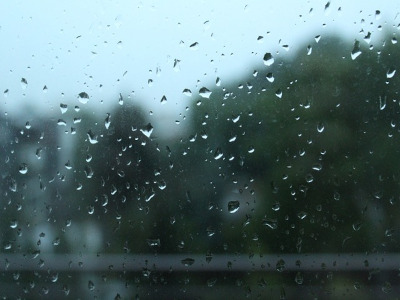Rain belongs to nature and is a common weather phenomenon all over the world. Everybody knows what rain is and understands the importance of it and the impact it has on our nature. It is one of the most valuable life sources for millions of plants and animals, and of course, we humans are in many ways dependent on rain. But how does rain form, and what does the water cycle mean to our environment?
The rain starts to form when water from our seas, rivers, lakes, and even plants evaporates. A certain temperature must be reached for the water to evaporate. This temperature can be created by, for instance, sun rays. The evaporated water is invisible and gaseous. Furthermore, it is spreading far up into the sky. Up in the air, the temperature is so cold again that the water vapor changes its aggregate state from gauseous to liquid in the form of water droplets. Many of these water dops form a cloud, and if this cloud gets too heavy, it unloads itself through precipitation. The rain falls on the earth, in our lakes, seas, etc., and the process that is called the water cycle starts again from the beginning.

Other than that, there are different kinds of rain. One of them is called convectional rainfall. This special rain forms if the atmosphere is unstable and moist. With the rising temperature, the heated air is also rising. As this evaporated air rises and reaches a particular height, it suddenly cools off. In this process, the so-called cumulus cloud forms. The rainfall is often accompanied by thunder and lightning.
Orographic rainfall occurs when, near a mountain range, moist air rises. The air cools down when it moves further away. The reason for the orographic rainfall that occurs afterwards is the formation of clouds. Orographic rainfall occurs in mountainous regions.
Cyclonic rainfall, which is also called frontal rainfall, occurs because of a cyclone. A cyclone is a huge mass of air that circulates at a powerful pressure in the atmosphere. In a clockwise direction, it moves in the southern hemisphere, and in an anticlockwise direction, it moves in the northern hemisphere. The cyclonic rain (frontal rainfall) falls when the cold air and the hot air clash. Because the cold air is heavier than the warm air, the cool air sinks among the warm air layers. The cyclonic rainfall can cause heavy rains, storms, and even tornadoes.
Another way to distinguish rain is if it gets divided into warm and freezing rain. When a cloud forms, it does not only consist of droplets of water but also of ice crystals. These ice crystals absorb the water. But why are these ice crystals even forming? The reason for that is the extremely low temperatures that are sometimes in the sky. The more water the cloud collects, the more ice crystals, snow, and hail are forming. At one point, the snowflakes and the ice get too heavy, and the cloud is not able to hold them anymore. However, if the air, which is close to the ground, is warmer, then the snow and ice melt before they hit the earth.
Sources:
https://www.sivakids.de/regen-entstehung/
https://unacademy.com/content/cbse-class-11/study-material/geography/rainfall-types/
